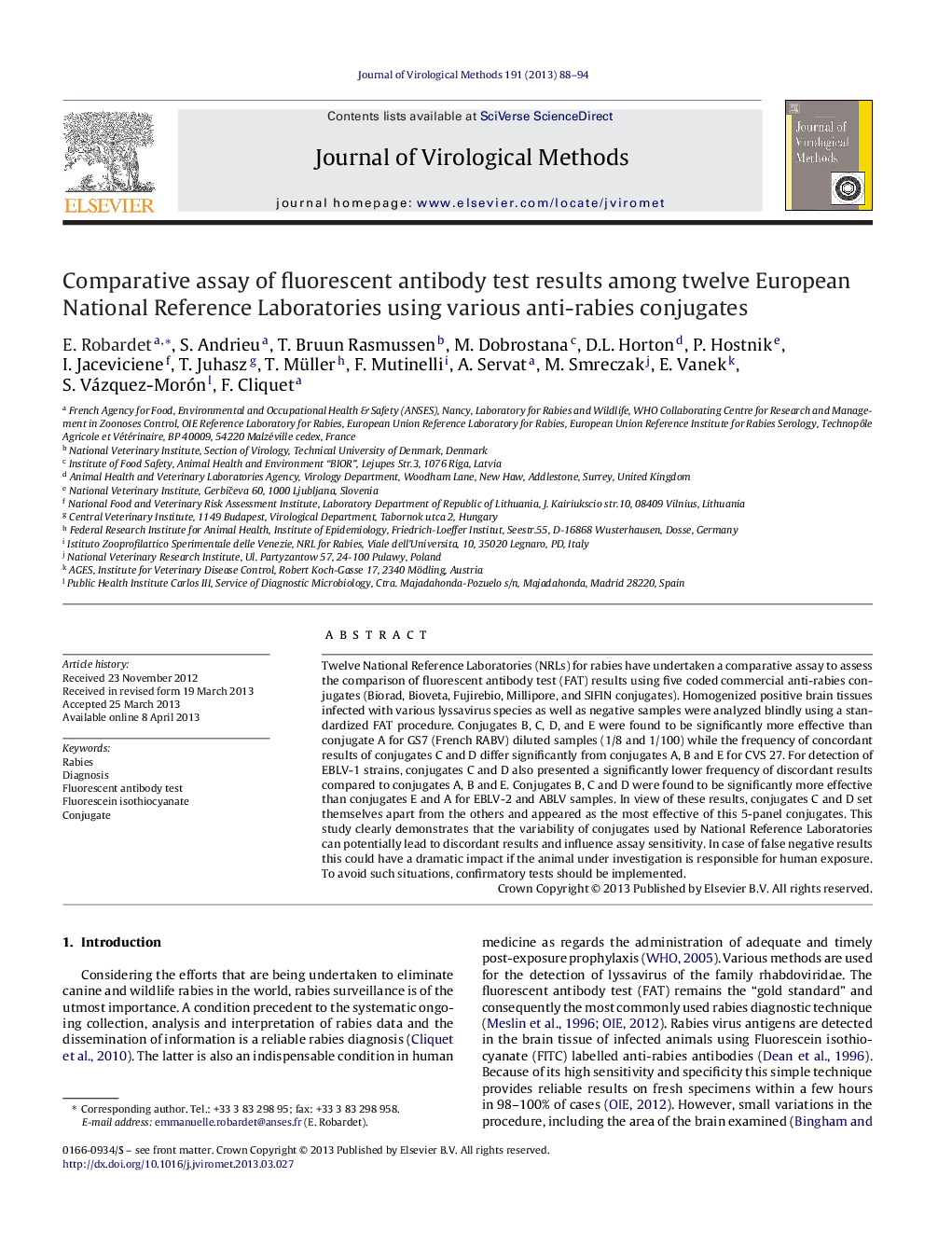| Article ID | Journal | Published Year | Pages | File Type |
|---|---|---|---|---|
| 3406648 | Journal of Virological Methods | 2013 | 7 Pages |
•Twelve laboratories compared the performance of commercial anti-rabies conjugates.•Variability of conjugates led to some discordant results.•Higher concordance was found with conjugates composed of monoclonal anti-bodies.
Twelve National Reference Laboratories (NRLs) for rabies have undertaken a comparative assay to assess the comparison of fluorescent antibody test (FAT) results using five coded commercial anti-rabies conjugates (Biorad, Bioveta, Fujirebio, Millipore, and SIFIN conjugates). Homogenized positive brain tissues infected with various lyssavirus species as well as negative samples were analyzed blindly using a standardized FAT procedure. Conjugates B, C, D, and E were found to be significantly more effective than conjugate A for GS7 (French RABV) diluted samples (1/8 and 1/100) while the frequency of concordant results of conjugates C and D differ significantly from conjugates A, B and E for CVS 27. For detection of EBLV-1 strains, conjugates C and D also presented a significantly lower frequency of discordant results compared to conjugates A, B and E. Conjugates B, C and D were found to be significantly more effective than conjugates E and A for EBLV-2 and ABLV samples. In view of these results, conjugates C and D set themselves apart from the others and appeared as the most effective of this 5-panel conjugates. This study clearly demonstrates that the variability of conjugates used by National Reference Laboratories can potentially lead to discordant results and influence assay sensitivity. In case of false negative results this could have a dramatic impact if the animal under investigation is responsible for human exposure. To avoid such situations, confirmatory tests should be implemented.
